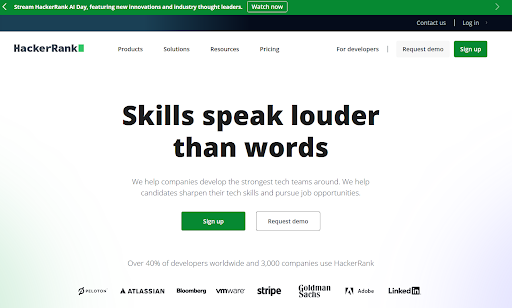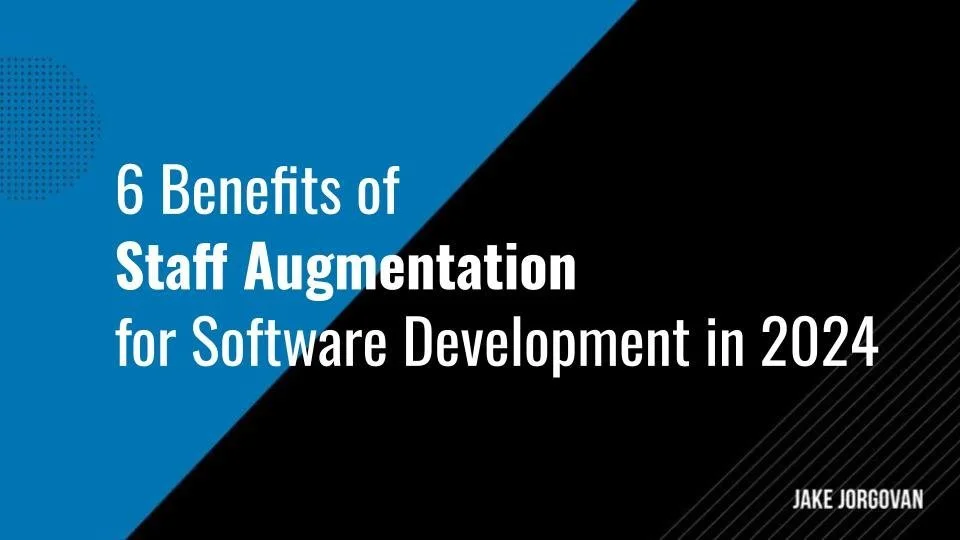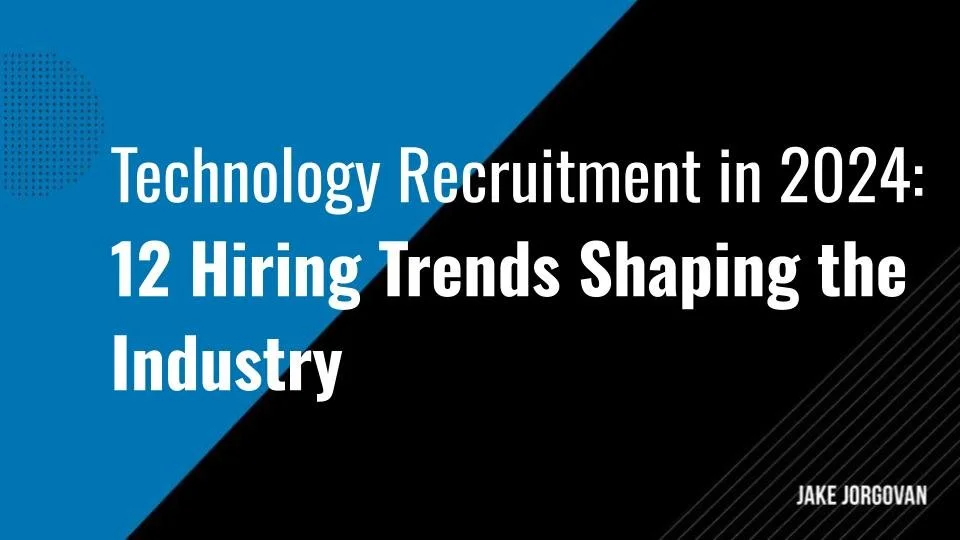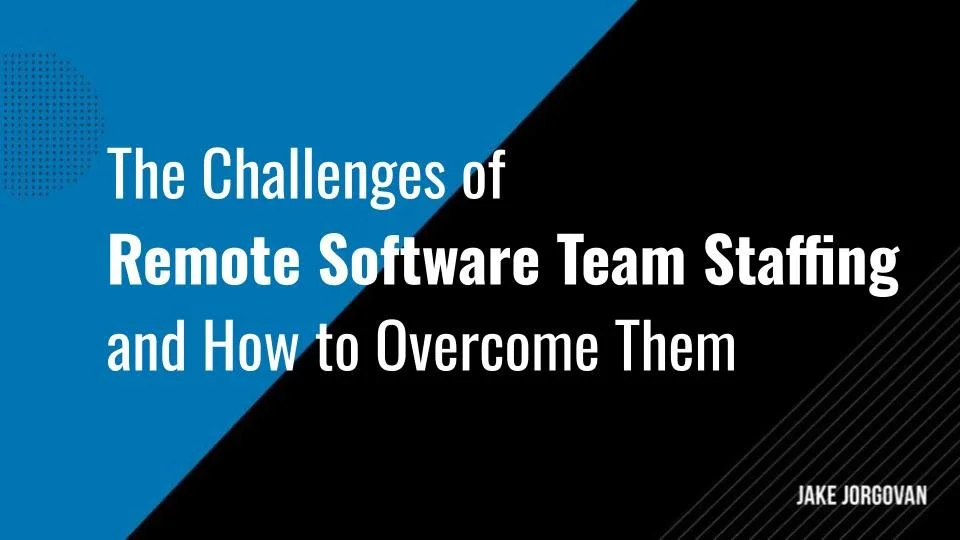Technology Recruitment in 2025: 12 Hiring Trends Shaping the Industry
The battle to attract and maintain exceptional software talent has intensified in today's rapidly evolving tech industry.
Companies face a dual challenge: navigating the shifting sands of technology recruitment and ensuring they not only draw in but also hold onto the best minds.
With the scene constantly changing, understanding the latest trends is more than just advantageous—it's essential.
You're in the right place if you're looking to engage and keep software talent.
Our article delves into the 12 key trends shaping technology recruitment in 2025:
The rise of social recruiting and the power of employer branding.
Placing a greater emphasis on soft skills.
Leveraging AI for smarter candidate matching.
The importance of proactive candidate engagement.
Moving towards skills-based hiring practices.
The increasing demand for cybersecurity expertise.
Adapting to the gig economy and work flexibility.
Understanding Gen Z's impact on recruitment strategies.
The transformation of recruiters into strategic partners.
Navigating the nuances of pay transparency.
The economic factors influencing hiring strategies.
Addressing the ongoing Great Resignation.
Stay with us to explore how you can adapt these insights to benefit your recruitment strategy and secure the top talent in the tech industry.
Trend #1: Social Recruiting and Employer Branding
Social Recruiting and Employer Branding are pivotal in technology recruitment. Companies use social media platforms like LinkedIn, GitHub, and Twitter to connect with potential candidates.
They showcase their work culture, employee testimonials, and corporate values through engaging content, such as behind-the-scenes videos, employee spotlight interviews, and live Q&A sessions.
LinkedIn remains a top choice for professional networking and recruitment, allowing companies to post job openings, share industry insights, and highlight company achievements.
Conversely, GitHub, popular among tech professionals, is used to scout for talent based on their contributions to open-source projects, showcasing technical expertise and collaboration.
For example:
Google and AT&T are notable examples on LinkedIn, where they capitalize on showcasing employee achievements and career milestones to build a connection with prospective candidates. Google emphasizes transparency and employee growth, whereas AT&T uses the #LifeAtATT hashtag to create a cohesive narrative around their company culture.
Instagram and YouTube are leveraged for visual storytelling, presenting the company's work environment, social events, and team-building activities, giving a glimpse into daily life at the company.
For example:
Salesforce and Microsoft stand out on Instagram, utilizing the platform's visual strengths to convey their work environment and corporate culture. Salesforce conducts employee interviews and shares event reels, while Microsoft uses the #microsoftlife hashtag to aggregate content related to their work-life
These efforts in social recruiting and employer branding significantly impact recruitment success by:
Attracting a broader, more diverse talent pool.
Building a strong employer brand that resonates with potential candidates.
Engaging with passive candidates who are not actively job searching but may be interested in future opportunities.
This strategic approach not only fills immediate hiring needs but also creates a sustainable talent pipeline, enhancing the company's reputation as an employer of choice in the competitive tech industry.
Trend #2: Soft Skills Emphasis
The emphasis on soft skills in technology recruitment reflects the industry's acknowledgment of their importance in complementing technical abilities.
Companies recognize that technical skills are essential but not sufficient for organizational success.
Soft skills such as communication, collaboration, adaptability, and problem-solving are increasingly sought after.
Employers use innovative methods like behavioral interviews, team-based problem-solving exercises, and psychometric testing to assess these skills. These approaches provide insights into a candidate's ability to work in teams, adapt to changing environments, and lead projects effectively.
Pro tip: Integrating soft skills with technical expertise fosters a more dynamic and adaptable workforce.
Employees who excel in both areas tend to contribute more significantly to a positive work culture, driving innovation and efficiency.
As a result, companies prioritizing soft skills in their hiring process are better positioned to navigate the complexities of the modern tech industry, ensuring sustained growth and competitiveness.
Trend #3: AI-Driven Candidate Matching
AI-driven candidate matching leverages machine learning algorithms to streamline the recruitment process.
These technologies analyze resumes and job descriptions, identifying patterns and keywords to match candidates with suitable job openings.
Pro tip: Tools like HireVue and Pymetrics offer solutions that not only parse resumes but also evaluate candidates' performances in virtual interviews or games designed to measure cognitive and emotional attributes.
The benefits of AI-driven recruitment include increased efficiency, as these systems can process and evaluate vast numbers of applications quickly.
They also help reduce unconscious bias by focusing on skills and experiences relevant to the job rather than on personal attributes like age, gender, or ethnicity.
Moreover, AI tools can improve candidate quality by ensuring that those who proceed to the interview stage are the best fit for the role based on objective data analysis.
By employing AI in recruitment, you too can save time and resources, make more informed hiring decisions, and contribute to a fairer, more equitable hiring process.
Trend #4: Proactive Candidate Engagement
Proactive candidate engagement involves reaching out and interacting with potential candidates before they apply for a position.
This strategy includes using technology to streamline and personalize communication, fostering a connection between the company and the candidate.
Tools like CRM (Candidate Relationship Management) software, automated messaging, and AI chatbots are used to keep in touch, provide updates, and address queries in real time.
Remember: Effective engagement leads to a positive candidate experience, making individuals feel valued and informed throughout the hiring process.
This approach can significantly enhance your tech company's ability to attract and retain top talent by establishing trust and demonstrating the company's commitment to candidate success.
Proactive engagement also allows companies to build talent pools for future hiring needs, reducing time-to-hire and improving the quality of hires by nurturing relationships with potential candidates over time.
The video below provides a neat explanation.
Hint: For awesome candidate engagement tips, start watching at 2:13.
Trend #5: Skills-Based Hiring
Skills-based hiring focuses on candidates' practical abilities and competencies rather than solely on their educational background or formal qualifications.
Technology companies are adopting this model to better align with the specific needs of roles, especially in fast-evolving sectors like technology.
Tools such as coding assessments, skill-specific tests, and project-based evaluations are commonly used to gauge the practical skills of candidates.
For instance, platforms like HackerRank and Codility provide real-world coding challenges that help assess technical skills in a controlled environment.
There are a ton of advantages of skills-based hiring.
For employers, it opens up a wider talent pool, including self-taught professionals and those with non-traditional career paths, enhancing diversity and innovation.
For candidates, it offers a fairer opportunity to demonstrate their abilities and fit for the role, regardless of their educational background.
This approach ensures that the hiring process is more inclusive and increases the likelihood of finding candidates who are truly capable of performing in their roles, leading to better job satisfaction and retention rates.
Trend #6: Cybersecurity Talent Demand
The demand for cybersecurity talent is surging due to the increasing number of cyber threats and the necessity to protect sensitive data.
The market is witnessing the emergence of specialized roles like security analysts, ethical hackers, security architects, and compliance officers, each requiring specific skills such as threat assessment, intrusion detection, coding, and legal and regulatory requirements knowledge.
Tech companies are refining their recruitment strategies to attract this vital talent, recognizing that traditional hiring methods may not suffice.
Efforts include offering competitive salaries, continuous learning and certification opportunities, and promoting a strong security culture within the organization.
Additionally, technology businesses are leveraging professional networks, cybersecurity job fairs, and partnerships with educational institutions to source candidates with the needed expertise.
Remember: To retain cybersecurity professionals, focus on career development paths, emphasize challenging work that contributes to meaningful security outcomes, and foster an environment where cybersecurity talent can thrive and innovate.
Trend #7: Gig Economy and Work Flexibility
The gig economy, characterized by short-term contracts or freelance work, is reshaping recruitment and work dynamics.
This shift offers benefits like increased flexibility for workers and access to a broader talent pool for companies.
It allows firms to scale their workforce quickly based on project needs and hire specialists for specific tasks without the long-term commitment of traditional employment.
Here’s the problem:
Hiring gig workers also presents challenges, such as the need for streamlined onboarding processes, effective management of remote and transient teams, and ensuring compliance with labor laws and regulations.
To adapt, tech companies are investing in technology platforms that facilitate remote collaboration, developing clear policies for gig worker engagement, and ensuring fair treatment in terms of compensation and working conditions.
Pro tip: To fully leverage the gig economy's potential, adapt to traditional employment models and embrace more flexible and inclusive workforce strategies.
Trend #8: Gen Z's Influence on Recruitment
Gen Z's entry into the workforce prompts recruitment strategy shifts due to their unique characteristics and expectations.
For example, this generation values technology integration, work-life balance, and organizational transparency.
Besides, they expect swift and digital-first recruitment processes, including online applications, virtual interviews, and immediate feedback.
Tech firms are responding by upgrading their technological infrastructure, utilizing social media for recruitment, and creating more engaging, mobile-optimized career websites.
They're also more transparently emphasizing their brand's values and culture, aligning with Gen Z’s preference for employers who demonstrate social responsibility and ethical practices.
Pro tip: To attract Gen Z, offer flexible working conditions, opportunities for career growth, and a strong emphasis on mental health and well-being.
Trend #9: Recruiters as Strategic Partners
Recruiters are transitioning from primarily administrative roles to becoming strategic partners within organizations.
They are now integral to developing and executing talent acquisition strategies that align with business goals.
This shift involves a deeper understanding of market dynamics, workforce planning, and talent management.
When they become your strategic partners, recruiters analyze data to predict hiring needs, identify talent gaps, and understand the competitive industry.
They work closely with your hiring managers and executives to ensure the recruitment strategy supports the overall business objectives.
This collaboration leads to more informed decision-making and a proactive approach to sourcing and retaining top talent.
Their role also encompasses employer branding, candidate experience, and engagement strategies, contributing to your organization's reputation as an employer of choice.
As a result, recruiters can directly impact your company's success and growth.
Trend #10: Pay Transparency and Equity
Pay transparency and equity are critical elements in recruiters' evolving roles, transforming them from administrative to strategic contributors within their organizations.
These professionals are now tasked with implementing transparent salary policies and ensuring equitable compensation practices that align with broader business and talent strategies.
Recruiters must understand and articulate the rationale behind pay structures, ensuring they are fair and competitive, especially in the tech niche.
This transparency helps attract and retain talent as candidates and employees increasingly prioritize clear and equitable compensation practices.
Furthermore, recruiters are instrumental in analyzing compensation data to identify and rectify pay disparities, advancing organizational commitment to diversity and inclusion.
Remember: By actively engaging in these strategic functions, recruiters help build trust and integrity in the employer brand, contributing significantly to organizational success.
Trend #11: Economic Impact and Talent Competition
Economic conditions, particularly recessions, significantly affect recruitment strategies.
Tech companies face reduced budgets and heightened competition for top talent during these times.
To navigate these challenges, organizations adapt by focusing on cost-effective recruitment methods, emphasizing non-monetary benefits like career development opportunities, and leveraging technology and automation to streamline hiring processes.
For example, in economic uncertainty, businesses may implement hiring freezes or opt for salary reductions, necessitating a shift towards more efficient and strategic recruitment approaches.
You may also prioritize internal referrals, online platforms, and social media to attract candidates, reducing dependence on expensive recruitment channels.
Pro tip: Technology plays a crucial role in this adaptation, with tools like applicant tracking systems and AI-driven screening being utilized to enhance efficiency and reduce operational costs.
Moreover, companies invest in upskilling and reskilling programs to better align their workforce's capabilities with changing market demands and ensure they have the necessary skills for future growth.
These strategies help manage the immediate impacts of economic downturns and prepare organizations for long-term success by building a more resilient and adaptable workforce.
Trend #12: Continuation of the Great Resignation
The Great Resignation, marked by a significant increase in job resignations post-pandemic, has profoundly affected the recruitment industry.
In November 2021, resignations spiked by 125% compared to a decade earlier, reflecting widespread job market discontent.
Key factors driving this trend include low pay, lack of advancement opportunities, feeling disrespected at work, and a desire for more work-life balance and flexibility.
Technology companies must focus on creating a better work environment addressing these concerns in response to the Great Resignation.
This includes offering competitive salaries, clear career progression paths, respectful workplace cultures, and flexible working conditions.
Tech firms should also harness data and analytics to understand employee needs better and tailor their retention strategies accordingly.
Pro tip: Recognize the shift in job seeker priorities. That way, you’ll adapt your recruitment and retention approaches to emphasize the quality of work life, including benefits, company culture, and opportunities for professional growth.
This strategic response can help you retain your current employees and attract new talent in a competitive market.
Adapting to Change: Embracing the Top 12 Hiring Trends of 2025
This article has explored the 12 pivotal hiring trends shaping the technology recruitment industry in 2025.
These trends underline the dynamic shifts in how companies attract and retain talent.
Recognizing these trends is vital for staying competitive in the talent market, as they directly influence recruitment success and organizational growth.
You can now adapt and refine your recruitment strategies to meet the evolving demands of the job market, ensuring your organization continues to attract and retain the top talent it needs to succeed.




























